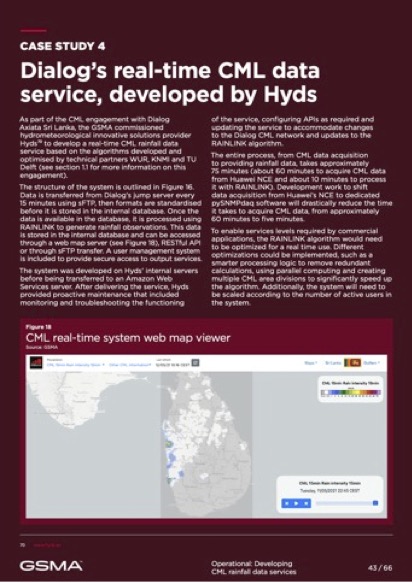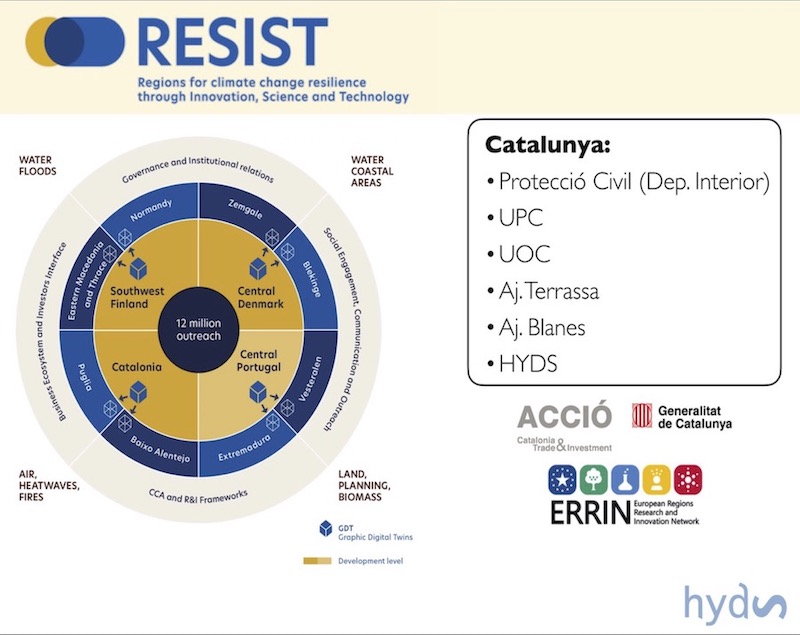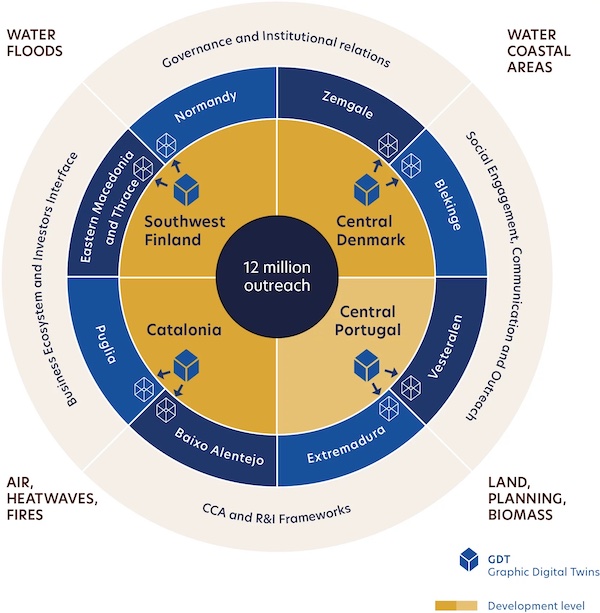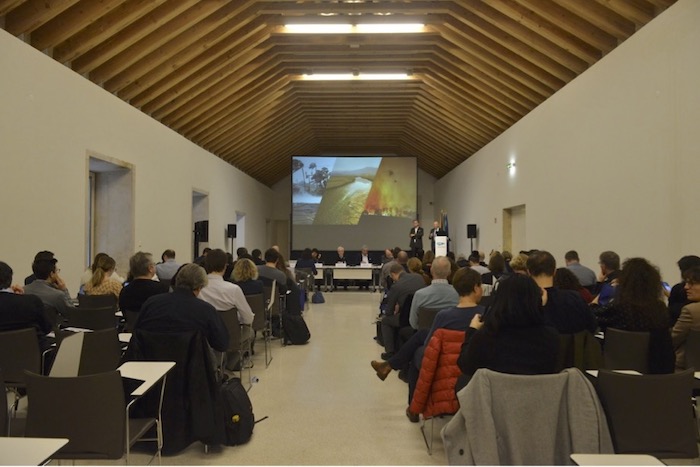
News
Find recent news where hyds is involved
CLIMALERT final webinar
Yesterday the final webinar of the CLIMALERT project was held and the aplications of the CLIMALERT platform, developed by hyds, were showed by the different CLIMALERT partners. After the introduction by the project coordinator, Jean-François Berthoumieu, the context of the SUDOE programme was presented by Isabelle Roger, the Director of the Joint Secretariat of the Interreg SUDOE programme. Later on, a representative of each partner explained the uses of the CLIMALERT platform and the goals achieved during the project. Closing the session an informative video was transmitted.
Restitution de nos travaux interreg Sudoe Climalert avec le développement de notre plateforme de gestion des risques climatiques @Chambagri24 @Sudoe5 pic.twitter.com/hMaF1kwolQ
— Nicolas Fedou (@FedouNicolas) April 25, 2023
hyds Collaborates with GSMA on the use of CML data for rain estimation
Climate change has made weather patterns more difficult to predict and extreme events such as droughts and floods more frequent and severe. In this changing climate, accurate and local weather information is vital for decision-making and building resilience in local communities. Existing mobile network infrastructure can be used to provide high-resolution rain data using commercial microwave links (CML). This approach radically increases the number of observations available (e.g. 19.000 CMLs vs 50 weather stations in Nigeria) and has been shown to be in quality at the height of the s rain gauge and exceeds satellite rain data.
Read the report on current knowledge of the accuracy and coverage of CML rain data, the operational steps needed to develop CML data services, and the added value of CML data to climate resilience services.
hyds has collaborated in the drafting of the report and in the services associated with the exploitation of CML data.

hyds participates in the Horizon Europe Infoday Catalunya Cluster 5 (Climate) of Acció
hyds participates in the information day “Horizon Europe Infoday Catalunya Cluster 5 (Climate) and Cluster 6” where the novelties of the 2023 calls of Clusters 5 (Climate) and 6 (Food, bioeconomy, natural resources, agriculture and environment) are presented.
hyds has presented its experience in the success story of the RESIST project, winner in the last call of this program.
In RESIST, Catalonia is one of the 4 Large Scale Demostrators where the project is developed and works a consortium of Catalan entities with a total budget of 2,5 million euros:
- Protecció Civil (Dep. Interior)
- Ajuntament de Terrassa
- Ajuntament de Blanes
- Universitat Politècnica de Catalunya
- Universitat Oberta de Catalunya
- hyds

The media echo Catalonia’s participation in the RESIST project
Several media echo the participation of a consortium of Catalan entities (including hyds) in the RESIST project with a common budget of 2.5 million euros.

RESIST Kick-off
hyds participated in the kick-off meeting of the RESIST project of the European Commission’s Horizon Europe framework programme in Coimbra (Portugal).
This first meeting has served to meet all the project partners and establish the connections between the different parts of the project. Also, to plan in detail the work to be done in the coming months.
The objective of the initiative, called RESIST and framed in the Mission “Adaptation to Climate Change” of the Horizon Europe program of the EU, is to improve the detection capabilities of extreme situations such as floods, heat waves and the risk of forest fire, as well as to achieve greater preparation of society and municipalities.
You can find more information about RESIST at:
